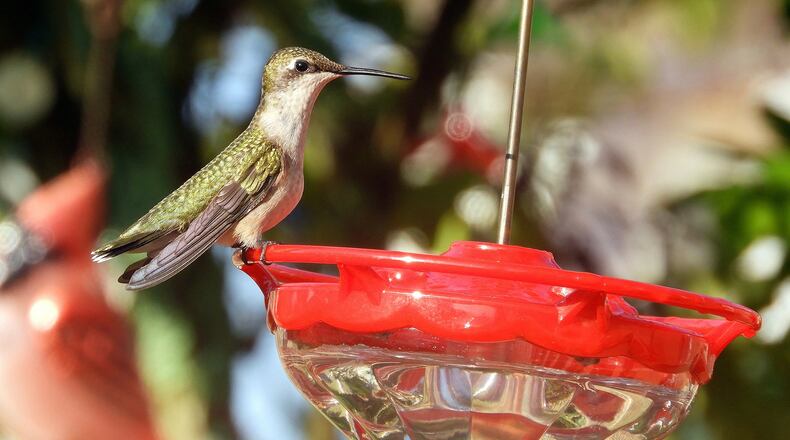My friend Thad Weed in Loganville, a longtime hummingbird aficionado, told me earlier this week that ruby-throated hummingbird activity seems “dramatically more than usual” in his yard for this time of year.
The increased activity, he said, leads him to predict an extra busy summer for the tiny birds as they wrap up their nesting season and get ready to migrate south. “I’m planning on hanging additional feeders on our back deck,” Weed said.
Whether his prediction holds true remains to be seen. But there’s no doubt that July through September traditionally is when more hummingbirds show up in Georgia’s yards than at any other time. More than 100 rubythroats may visit a single yard during this time in search of nectar from flowers or from backyard feeders, according to Terry Johnson, retired nongame program director for Georgia’s Wildlife Resources Division.
The birds’ goal is to rapidly put on weight for the energy they need to make their perilous journeys of more than 500 miles across the Gulf of Mexico to winter homes in Yucatan and Central America.
Showing up in yards now are mostly adult male rubythroats and newly fledged youngsters. The males do little or nothing to help females build nests or rear their young, so they can get an early jump on fattening up for migration. (Many females right now are raising second broods and have little time to visit feeders.)
Adding to the July influx will be streams of other southbound rubythroats that nested farther north, as far as Canada, and will compete with Georgia’s birds for nectar.
So, by the end of this month, when the nesting season will be over, there should be plenty of rubythroats — males, females and juveniles —vying for nectar from flowers and feeders in our yards. If Thad Weed’s prediction is correct, there will be more birds than usual this year.
At any rate, the feeding frenzy will last through September. By October, the birds will be gone until their return next spring.
IN THE SKY: From David Dundee, Tellus Science Museum astronomer: The moon will be first-quarter on Tuesday. Mars is very low in the west around dusk. Jupiter is in the east at dusk. Saturn rises in the east at about midnight. Mercury and Venus are not easily seen right now.
About the Author
Keep Reading
The Latest
Featured



